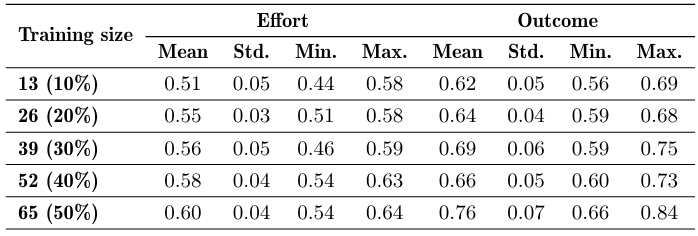Table of Links
2. Background
2.1 Effective Tutoring Practice
2.2 Feedback for Tutor Training
2.3 Sequence Labeling for Feedback Generation
2.4 Large Language Models in Education
3. Method
3.1 Dataset and 3.2 Sequence Labeling
3.3 GPT Facilitated Sequence Labeling
4. Results
6. Limitation and Future Works
APPENDIX
B. Input for Fine-Tunning GPT-3.5
C. Scatter Matric of the Correlation on the Outcome-based Praise
D. Detailed Results of Fine-Tuned GPT-3.5 Model’s Performance
D. DETAILED RESULTS OF FINE-TUNED GPT-3.5 MODELS’ PERFORMANCE

:::info
This paper is available on arxiv under CC BY 4.0 DEED license.
:::
:::info
Authors:
(1) Jionghao Lin, Carnegie Mellon University (jionghal@cs.cmu.edu);
(2) Eason Chen, Carnegie Mellon University (easonc13@cmu.edu);
(3) Zeifei Han, University of Toronto (feifei.han@mail.utoronto.ca);
(4) Ashish Gurung, Carnegie Mellon University (agurung@andrew.cmu.edu);
(5) Danielle R. Thomas, Carnegie Mellon University (drthomas@cmu.edu);
(6) Wei Tan, Monash University (wei.tan2@monash.edu);
(7) Ngoc Dang Nguyen, Monash University (dan.nguyen2@monash.edu);
(8) Kenneth R. Koedinger, Carnegie Mellon University (koedinger@cmu.edu).
:::